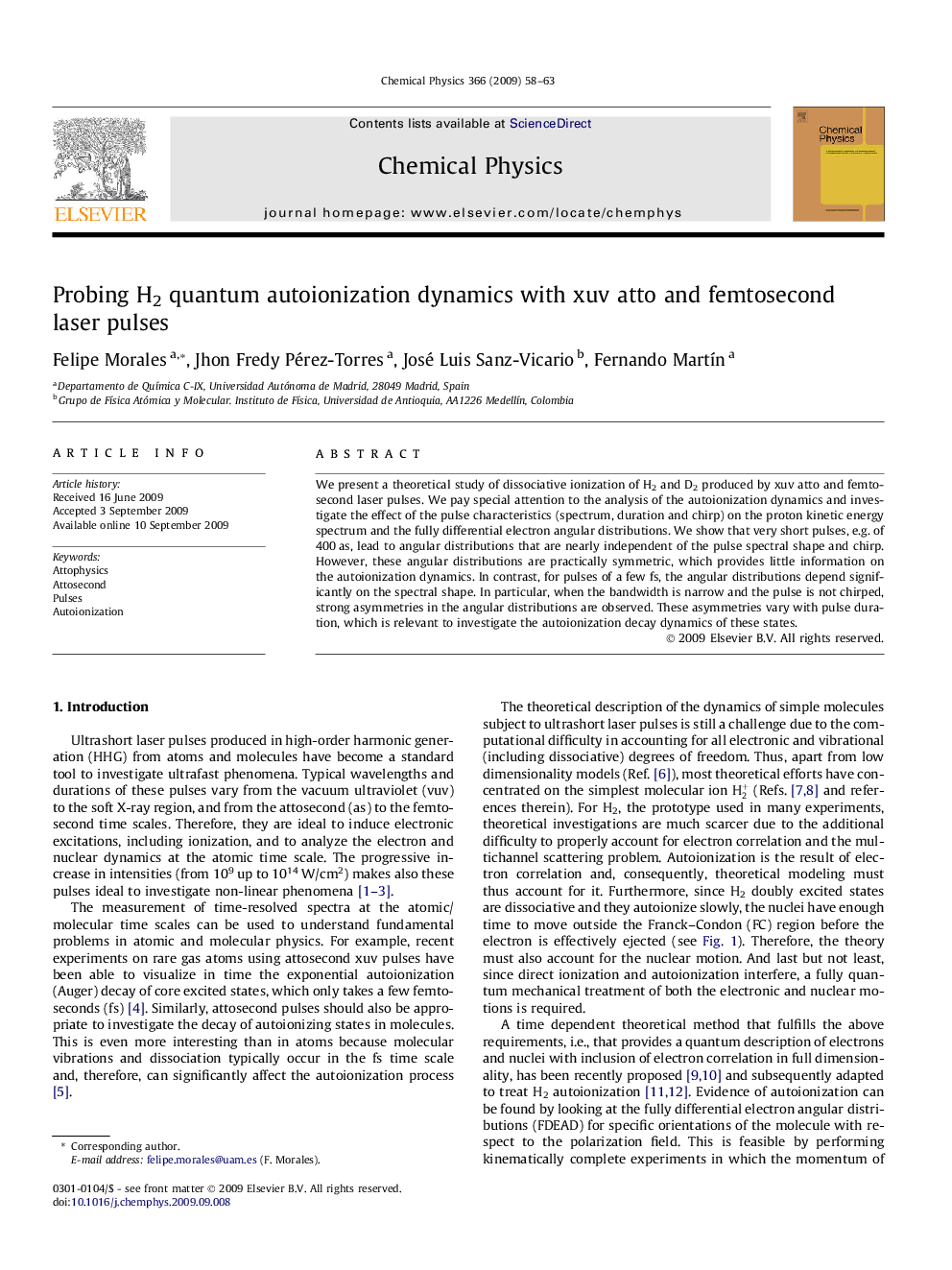| Article ID | Journal | Published Year | Pages | File Type |
|---|---|---|---|---|
| 5375416 | Chemical Physics | 2009 | 6 Pages |
Abstract
We present a theoretical study of dissociative ionization of H2 and D2 produced by xuv atto and femtosecond laser pulses. We pay special attention to the analysis of the autoionization dynamics and investigate the effect of the pulse characteristics (spectrum, duration and chirp) on the proton kinetic energy spectrum and the fully differential electron angular distributions. We show that very short pulses, e.g. of 400Â as, lead to angular distributions that are nearly independent of the pulse spectral shape and chirp. However, these angular distributions are practically symmetric, which provides little information on the autoionization dynamics. In contrast, for pulses of a few fs, the angular distributions depend significantly on the spectral shape. In particular, when the bandwidth is narrow and the pulse is not chirped, strong asymmetries in the angular distributions are observed. These asymmetries vary with pulse duration, which is relevant to investigate the autoionization decay dynamics of these states.
Keywords
Related Topics
Physical Sciences and Engineering
Chemistry
Physical and Theoretical Chemistry
Authors
Felipe Morales, Jhon Fredy Pérez-Torres, José Luis Sanz-Vicario, Fernando MartÃn,
